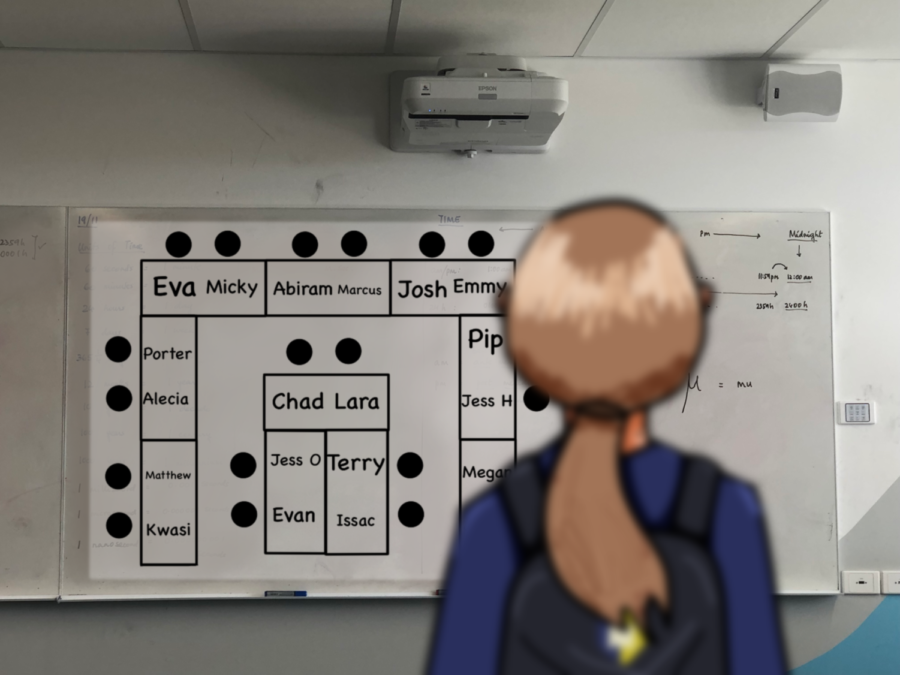Seating Plans: The Good the Bad and the Ugly
May 24, 2023
Seating Plans, we all know them, and we all have them. Described once as the ‘…plague upon all students’ freedom…’ by William T (Year 11), seating plans are a notoriously disliked part of the classroom habitat. In saying that, are seating plans actually that bad? Do they even work? Well, the short answer is that seating plans are usually an inconvenience and that they very rarely work. The long answer is, well you will have to read the article for that.
The first point that needs discussion is the purpose of seating plans. Despite common belief, the purpose of a seating plan is not to cause student pain. In fact, the main purpose of a seating plan is to ensure a quiet and productive classroom environment. Over my many years of schooling, there are many types of seating plans I have experienced. The two main ones are the “Randomiser” and the “Friend Strategy”. There is also the option of no seating plan. All three of these ideas have merit for different types of classes and yet none of the three are flawless.
The first of these seating plans is the Randomiser. This requires randomly placing students in alternating gender order, sometimes by putting them in alphabetical order as well. This is usually quite effective in the younger grades, think primary up to Year 7. Unfortunately, as students get older, one of two things happen. The students in the seating plan either get closer to their study buddies or end up very strongly disliking each other. These outcomes cause more disruption than if a class was to choose where to sit. In a class, a teacher wants their students to be enthusiastic about the content and enthusiasm is severely reduced when students aren’t able to interact with their friends. The positives of this seating plan are that students are, in most cases, more quiet and less disruptive. This is good for subjects where students are required to do a lot of listening and notetaking and very little collaborative work. It is also best for younger grades as opposed to the older students.
The second plan is to let students choose where to sit. This is the direct opposite of the first option as it gives students complete autonomy. The potential issues of this come mainly in the form of disruption. When groups of noisy friends are allowed to sit near each other they can very easily disrupt the whole class very easily. Choosing seats can also be a very good distraction for students and easily set them off task. This is all obviously very undesirable for a teacher which is why many choose to implement a seating plan. This method does have its merits though, group work is always efficient and exciting, and enthusiasm for the class is boosted as well. This plan is recommended for those classes with well-behaved and collaborative students. It is good for all grades but likely better for Years 10-12.
The third plan is the ‘Friend Strategy’. This strategy is by far the best, consisting of pairing friends together and placing those pairs in a random assortment across the room. This removes the uncomfortable feel of randomly sorted seating whilst also stopping groups of friends from causing disruption in the classroom. The main issue with this plan is that the teacher will have to know the students and their friends to be able to arrange this seating plan. This works when a teacher knows their students, such as a Year coordinator having a class with all students from their grade. The benefits of this plan are quite clear. It allows for students to be comfortable and enthusiastic in class by sitting with a friend and minimised distracting and disruptive situations. It allows for effective group or partner work without coming with the usual chaos that comes with large groups of friends sitting together.
Overall, good or bad seating plans can make a huge difference to the productivity of a class. Similarly, not having a seating plan at all can be problematic. Therefore, I think the best strategy that I have experienced at the College is the Friend Strategy style. Whilst in an ideal world we could all choose where we sit, I think the next best solution is allowing students to be with friends without allowing large groups to disrupt a class. Or maybe the best solution is having no seats at all… what do you think?













